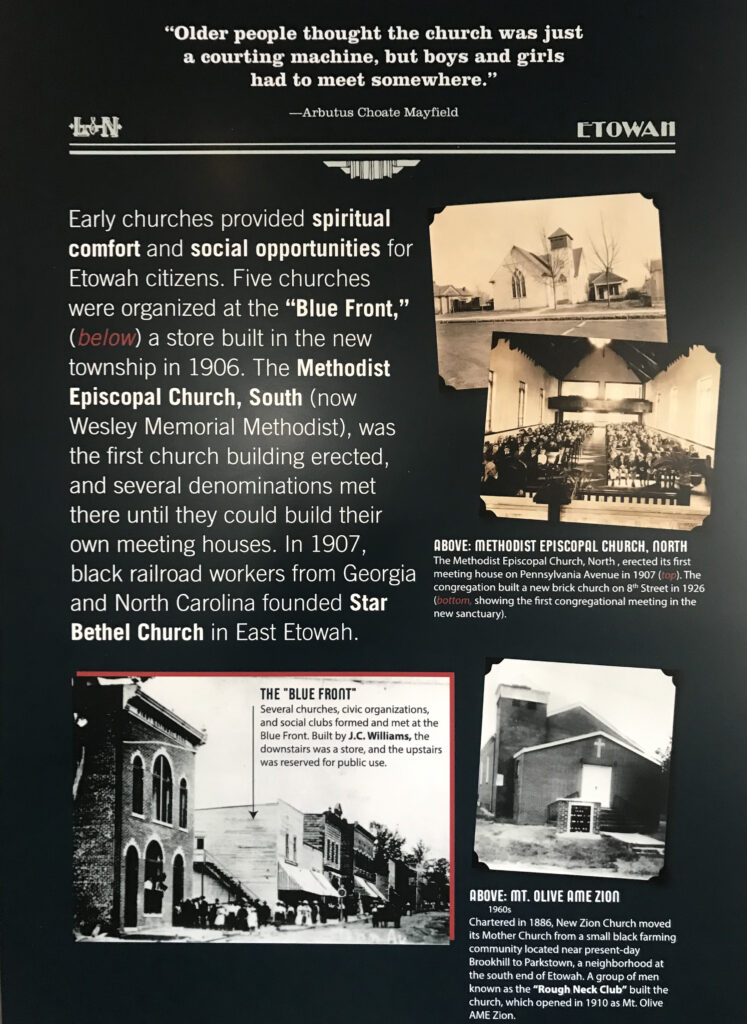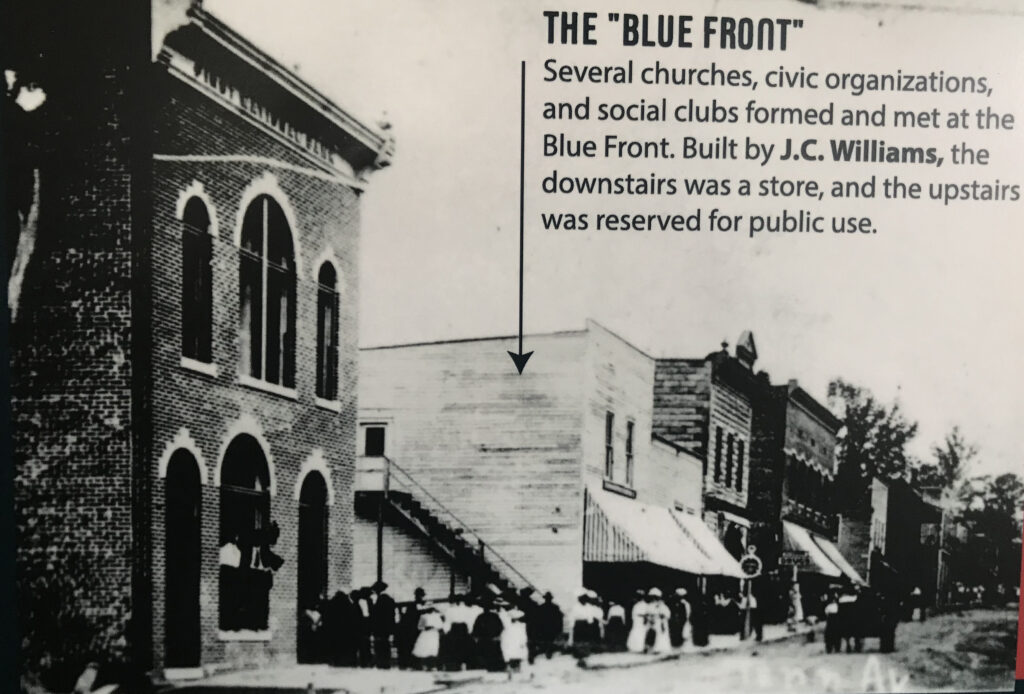Russia’s imperial dream for access to Israel/Mediterranean
August 25, 2025 by Cup&Cross
Filed under Events, Featured, News, Publication

While doing research couple of years ago for an article on Ezek. 37-38 and Russia’s imperial dream to gain access to Israel and the Mediterranean, AI informed me that there is absolutely no official political news or analytics source that confirms such hypotheses.
Back then, I insisted on proceeding with the article regardless of this informed artificial and intelligent opinion and proceeded with completing the article called: Using Crimea and Splitting Turkey in Russia’s Strategy Against Israel.
PROPHETIC INSIGHT: The first picture with Putin is Ezekiel’s prophecy projecting Gog and Magog crossing into Israel. The other one is from Trump/Zelenskyy’s meeting last week, after no deal was reached with Putin in Alaska.
READ ALSO:
- Russia’s Prophetic Imperial Road to Israel
- Using Crimea and Splitting Turkey in Russia’s Strategy Against Israel
- RUSSIA/UKRAINE WAR: ENTER the BIRTH PANGS
- Bulgaria in the Tension between NATO, Ukraine and Russia
The Forgotten Etowah Revival
By 1907 Church of God overseer AJ Tomlinson was well aware of the Etowah outpowering going on in parallel with the Azusa Revival. He also used the Etowah L&N many times during his travels. But chose Cleveland (on the famous Copper Road route), because Cleveland had not seen revival just yet. And this was about to change soon…
Bradley County, Cleveland, Tennessee was the western terminus of the Copper Road where copper ore from Ducktown and Copperhill was brought by wagons to the East Tennessee & Georgia RR. It was completed to Cleveland from Dalton, Georgia in 1851. In 1905 the Southern Railway hired New York architect Don Barber to design what became known as “Terminal Station” of the Chattanooga Choo-Choo, which in parallel to the Etowah L&N Depot began construction in 1907 and opened in 1909. So, no, the choice Tomlinson made was not obvious at all, neither it was based on the train line per se. He did not want to compete with the Etowah and Chattanooga revivals, and settled for Cleveland instead…
 The Forgotten Etowah Revival
The Forgotten Etowah Revival
It started with the Old-Line Railroad quickly built in 1890 as part of a project to link Knoxville, TN to Marietta, GA by rail. Just a few short years afterwards, a distinctive feature was built as part of the line, the Hiwassee Loop, a circle of track that was built around Bald Mountain. The story told that when the workers came down from the mountain to build the L&N line and depot to connect the Hiwassee River Rail Loop, there wasn’t much to do except work. On the weekend, many of them flooded the old Methodist church across from today’s Etowah‘s chamber of commerce, mainly to look for women (as old timers plainly put it). А holiness preacher was carrying on a revival there, many were convicted under the power of the Holy Spirit and got saved.
Those were the years of ongoing holiness revivals across Appalachia. Out West, the Pentecostal revival at Azusa was already brewing. Much like the rest of the holiness outpourings, the Etowah revival swept through the area. Not just workers, but the local population was touched as well. The upper room at “Blue Front” built by J.C. Williams built in 1906, where revival meetings were held, became the starting point of at least five local congregations.
At the same time, the Church of God movement was gaining speed on the other side of the mountain. Murphy, Tellico Plains and Reliance all became sites of the first holiness Spirit outpourings. In just a short amount of time, the Church of God grew and moved down the trainline to Cleveland, TN. Interestingly enough, most of the trainline was built along old confederate routes, which followed the Trail of Tears.

The Tellico Blockhouse was the starting point for the Old Federal Road, which connected Knoxville to Cherokee settlements in Georgia. The route ran from Niles Ferry on the Little Tennessee River near the present-day U.S. Highway 411 Bridge, southward into Georgia. Starting from the Niles Ferry Crossing of the Little Tennessee River, near the U.S. Highway 411 bridge, the road went straight to a point about two miles east of the present town of Madisonville, Tennessee. This location is 20 some miles north of the Tellico Plains area that marks the site of the beginning of the Church of God (Cleveland, Tennessee). The road continued southward via the Federal Trail connecting to the North Old Tellico Highway past the present site of Coltharp School, intersected Tennessee Highway 68 for a short distance and passed the site of the Nonaberg Church. East of Englewood, Tennessee it continued on the east side of McMinn Central High School and crossed Highway 411 near the railroad overpass. Along the west side of Etowah, the road continued near Cog Hill and the Hiwassee River near the mouth of Conasauga Creek where there was a ferry near the site of the John Hildebrand Mill. From the ferry on the Hiwassee River the road ran through the site of the present Benton, Tennessee courthouse. It continued on Welcome Valley Road and then crossed the Ocoee River at the Hildebrand Landing. From this point the road ran south and crossed U.S. Highway 64 where once stood the River Hills Church of God (Ocoee Church of God).
Revival Continues
In 2023, over a dozen of churches from the greater Conasauga, Reliance, Ocoee, Old Fort, Benton, and Delano communities along with the two oldest Polk County congregations at Cookson Creek and Friendship Baptist, joined piece by piece the original revival vision God has given to many ministers for this area of East Tennessee. While a few saw it as a spiritual connection with the brief spark of the Lee University student revival earlier in the year, most were convinced it was the restoration movement of the original Appalachian/Cherokee holiness outpouring, which took place among L&N Depot and Hiwassee River Rail Loop workers in the old Methodist church at the “Blue Front” across from Etowah‘s chamber of commerce. In 2023, the Polk Co. Revival began in September and carried on well through the fall until Thanksgiving. This year, even more churches in the area are praying again for a fresh outpouring of the Spirit expecting another revival to sweep the hearts of many in the area where no more than a century ago, the Early Revival Rain fell in abundance.
TRUTHS from AZUSA STREET REVIVAL by Frank Bartleman
“A revival almost always begins among the laity. The ecclesiastical leaders seldom welcome reformation.”
One reason for the depth of the work at “Azusa” was the fact that
the workers were not novices. They were largely called and prepared
for years, from the Holiness ranks, and from the mission field, etc.
They had been burnt out, tried and proven. They were largely
seasoned veterans. They had walked with God and learned deeply
of His Spirit. These were pioneers, “shock troops,” the Gideon´s
three hundred, to spread the fire around the world. Just as the
disciples had been prepared by Jesus.
We have now taken on a “mixed multitude.” And the seeds of
apostacy have had time to work. “First love” has been also
largely lost. The dog has “returned to his vomit” in many cases,
to Babylonic doctrines and practices. An enfeebled mother can
hardly be expected to bring forth healthy children.
The very truths that gave birth to the Pentecostal movement are
today generally rejected as too strong.
A revival almost always begins among the laity. The ecclesiastical
leaders seldom welcome reformation. History repeats itself. The
present leaders are too comfortably situated as a rule to desire
innovation that might require sacrifice on their part. And God’s
fire only falls on sacrifice. An empty altar receives no fire!
God has always sought a humble people. He can use no other…
There is always much need of heart preperation, in humility and
separation, before God can consistently come. The depth of
any revival will be determined exactly by the spirit of repentance
that is obtained. In fact, this is key to every true revival born of God.
Men’s hearts are being searched…it is a tremendous sifting time,
not only of actions but of inner motives. Nothing can escape the
all-searching eye of God.
Bibliata.TV Reaches 75,000 Mark
 Bibliata.TV is one of our ministry websites for Christian videos targeting Bulgarian speaking people. The site gives opportunity for churches, ministers and individual believers to publish their Christian videos of worship, preaching, evangelizing, prayer, drama, movies and much more. On September 15, 2008 our team pre-released the website in beta testing version and it was officially launched in November 2008 after rebuilding the site due to government interference. Now after successfully relocating our servers to a secure hosing under a new contract and overcoming many trials, today one year latter on October 26, 2009 we reached having 5000 Christian videos with over 800 users.
Bibliata.TV is one of our ministry websites for Christian videos targeting Bulgarian speaking people. The site gives opportunity for churches, ministers and individual believers to publish their Christian videos of worship, preaching, evangelizing, prayer, drama, movies and much more. On September 15, 2008 our team pre-released the website in beta testing version and it was officially launched in November 2008 after rebuilding the site due to government interference. Now after successfully relocating our servers to a secure hosing under a new contract and overcoming many trials, today one year latter on October 26, 2009 we reached having 5000 Christian videos with over 800 users.
We send this to you as a praise report of having a culture changing Christian presences on the World Wide Web. When media is filled with pornography, indecent suggestive thoughts, violence and sheer ungodliness, Bibliata.TV provides a ChristSpace in which the name of the Lord can be broadcasted worldwide. It allows for the Bulgarian culture to express their religious beliefs and no longer be a slave to the communist oppressive mentality. Believers are free to share a new reality to a new generation.
Nearly every month we are encouraged by the testimonies of Bibliata.TV. Here are some of them:
- An elderly lady whom has difficulty leaving the home was instantly healed after watching a healing service on the site.
- A gentleman from the ghettos of Sofia heard the praise and worship videos of a local church and after contacting the pastor and attending his church he was saved. Now his whole family faithfully attends this church.
- A lady from a small village with no church watched the regularly uploaded services of a pastor and called the next day to receive the Lord as Christ and Savior.
- A Bulgarian business man has offered to partner with us to absorb some of the cost of the hosting of the site.
Due to this overwhelming success and popularity of the site, we have had to rethink our hosting strategy and Lord willing in the next few months we will negotiate a contract with a new firm to provide us with greater bandwidth so that even more users will be able to upload their videos to the site and be able to share in the ministry of others who have uploaded to the site. We are also in the process of releasing a similar website for English speaking believers, which we are calling WorldMissions.TV.
As Pentecostals historically…
As Pentecostals historically (and as a movement)
We have been looking for power when we should have been seeking after His presence
We have been looking for gifts and signs and wonders, when we should have been looking for fruits of the Spirit and of character
We have been looking for preachers and prophets to follow, when we should have been looking for God’s presence to abide in
We have been looking for prophetic words and utterance, when we should have been taking more time in personal prayer
We have been growing, when we should have been going
And going when we should have been learning in the Spirit
We have been looking for more ways to build, when we should have been looking for more ways to move and go
We have been looking for ways to influence the world, instead of looking to be uninfluenced by God
And in our desire to be leaders and influencers, we have forgotten how to be led by God
And for a long time as a movement, we have existed at the borderline, at the verge and at the danger of gaining our rightful place in human history, but loosing our royal position in the GLORY of GOD
BUT ONE THING WE DID GET RIGHT: The Baptism with the Holy Ghost (watch the full message)
Read also: Last Days Great REVIVAL
20 recent Pentecostal articles in light of the upcoming Pentecostal Sunday celebration:
- The Forgotten Azusa Street Mission: The Place where the First Pentecostals Met
- Diamonds in the Rough-N-Ready Pentecostal Series (Complete)
- 95th anniversary of the Pentecostal movement in Bulgaria
- Toward a Pentecostal Solution to the Refugee Crises in the European Union
- Historical and Doctrinal Formation of Holiness Teachings and Praxis among Bulgarian Pentecostals
- Pacifism as a Social Stand for Holiness among Early Bulgarian Pentecostals
- The Practice of Corporate Holiness within the Communion Service of Bulgarian Pentecostals
- Sanctification and Personal Holiness among Early Bulgarian Pentecostals
- First Pentecostal Missionaries to Bulgaria (1920)
- Historical and Doctrinal Formation of Holiness Teachings and Praxis among Bulgarian Pentecostals
- The Everlasting Gospel: The Significance of Eschatology in the Development of Pentecostal Thought
- Online Pentecostal Academic Journals
- What made us Pentecostal?
- Pentecostalism and Post-Modern Social Transformation
- Obama, Marxism and Pentecostal Identity
- Why I Decided to Publish Pentecostal Primitivism?
- Historic Pentecostal Revival Tour in Bulgaria Continues
- The Land of Pentecostals
- Pentecostal Theological Seminary Address
- A Truly Pentecostal Water Baptism
When Two Cultures Collide
In general, it is believed that when any two individuals come together, in the midst there will be some sort of tension. The coming together or collision consequences in tension that is the result of differing opinions and viewpoints. One major origin of such strain or confusion is due to misinterpretation. What is said is viewed erroneously and internalized or personalized in error. Furthermore, when this phenomenon occurs with two individuals from differing cultures, there is greater opportunity for misapprehension. It has been said that whatever is perceived by an individual is the true reality for that particular person. Meaning, however one views an event, even if falsely done, is what actually took place in that individual’s personalized world. It is such concept that must be taken to heart in order to genuinely be culturally sensitive. When two cultures collide, there must be open-mindedness and understanding of another’s world view. Yet, the straightforward part is to understand this concept and the difficult part is to place such concept into actuality.
30 years ago in Chicago

30 Years of the Bulgarian Church of God in Chicago
I left Chicago on this day 30 years ago (July 30, 1995). The Bulgarian church that day held service at 1 PM with 64 Bulgarians and many other internationals in attendance. Bulgarian students from the neighboring Indiana and Wisconsin attended as well. There was even a Bulgarian family from Alaska.
It was a Sunday. I left Chicago to preach in Beloit, WI that night and then left for Washington, D.C. the following morning. While driving north with quite the speed my Carolina blue Grand National began filling with white smoke. At first, I thought the air conditioner was on its last leg in the hot Chicago summer of 1995, but the air remained strong and cold. The cloud proceeded and it was so sensible that I had to slow down and basically stop on the side of the road. In my 35 years of ministry, I have only seen this one more time – in 2011 when the Glory of God descended over a youth camp we were preaching in the Bulgarian mountains. I did finally preach in Beloit and made it to D.C. the next day, but the vision of the cloud remained with me for the next 30 years.
Meanwhile, the word of mouth had spread and the Bulgarian church in Chicago was growing among the Bulgarian diaspora. On October 7, 1995, I was able to visit the church in Chicago again and present it to the National Overseer of the Bulgarian Church of God, Pastor Pavel Ignatov who visited the Bulgarian congregation in Chicago for the first time. By that time, it has become evident that the initial structuring for growth was giving more than expected results. The church became not only the first officially registered Bulgarian Pentecostal congregation in the United States, but also an important social and educational center able to minister to the 100,000 Bulgarians that live in the Great Lake region today.
Called to another mission, I left Chicago on July 30, 1995. The church bulletin upon my departure under Farewell and Appreciation read: “Today we are saying thank you to Dony for a job well done this past summer. He has served our church faithfully, and has been a tremendous blessing to Narragansett Ministries. Immediately following worship this morning, there is a dinner in Dony’s honor in the fellowship hall. And everyone is invited to attend.” Quiescently, while writing this next book for the 30th anniversary of the Bulgarian Church in Chicago, I was able to find this last bulletin in a box with several dozen letters I had sent weekly to my parents in Bulgaria. Surprising even to myself, those letters contain pictures, documents, dates, growth charts and progression predictions that are surprising even to me today. I remember spending countless nights in prayer, contemplating and strategizing over the new Bulgarian church plant, but I had forgotten all this was carefully documented as a case study.
The church congregation presented me with a plaque that represented my efforts and work in Chicago, which I have also kept until now. Because this plaque represents the prayers and the vision of many who are continuing the work today, establishing and leading Bulgarian churches around the world to providing pastoral care for many who have left the homeland in search for a better life. To these ministers goes my personal token of appreciation and thanks, “Well done thou good and faithful!” For me personally today a quarter of a century later, this plaque represents one very simply thing – I never betrayed my dreams. And in my book, this is well done…
10 Guidelines for Effective Church Group Chat Communication
by Kathryn Donev, LPC-MHSP, NCC
Interacting in church chat groups can be a bit complex at times and a touchy topic to discuss. Navigating in this realm requires respect and kindness to foster a healthy environment. The following are some key guidelines for virtual etiquette tailored to a church community setting.
- Be Christ like. Use language that is kind and humble. Avoid offensive comments or being judgmental. This requires being sensitive and thinking before you shoot out a text. Debating over a chat is probably not going to be productive so it’s best just to avoid it altogether. Being misinterpreted can happen faster in a distant space where you cannot base comments on interpersonal dynamics like facial expressions, voice tone, or eye contact.
- Stay on topic to relative events like prayer requests, encouragement or updates on church happenings. Perhaps shy away from politics and don’t disguise prayer requests as a way to share gossip or to promote your social status by being the first to share the news. Microaggression has no place in church chat groups. Examples include, “Who let you in the group?”, “What were you thinking?”, “I can’t believe you said that?”
- Understand that written language can be quickly misunderstood. It is a good practice to avoid all cap text which can be viewed as shouting or being demanding. Avoid phrases that are pushy like “do this now” or “you have to”. And excessive emojis use may distract from the message and can also cause confusion. It is very important to remember that humor is relative, especially in text form. Also, avoid mentioning individuals in a way that might make them uncomfortable. This may include singling a person out or calling them an unkind name. Something that you may think is funny or no big deal may come off as rude. Like calling one who likes to shop economically a “Thrifting Queen” or labels like “Moncho Man” may separate a person apart from group.
- Always respect privacy and confidentiality. Do not share personal prayer requests or sensitive information outside the group without permission. And if someone shares with you personally a concern, don’t go blast it in the group. If that person wants to share, they can do it on their own. Boundaries are easily blurred in a chat setting, but they still must exist to avoid group tension. If unsure, privately ask before sharing other’s requests publicly in the chat.
- Acknowledge and encourage those who are sharing. Respond to prayer requests or shared testimonies with supportive replies, such as “Praying” or “Thanks for sharing!” Ignoring messages can be viewed as abandonment or unconcern. And be sure to not play favorites in the group by over acknowledging one person’s comments over another. If you typically just give a thumbs up emoji, then do so across the board. A simple acknowledgment can also squash out paranoia that a concern has not been seen or understood.
- Be sensitive to the time of the day when you post. Avoid posting late at night or during inappropriate hours unless it’s truly an urgent prayer request.
- Think before you send messages. Double check what you write for clarity and typos before sending to avoid mix-ups. Also, think twice whether sharing information is a good idea or not. Some things might need to be shared at a latter time after confirming details or perhaps they need to be shared at an intimate family level before with a group.
- Try not to overload the chat. Refrain from sending multiple back-to-back messages thinking that they are not being seen. It is also a good practice to limit sharing lengthy posts that may overwhelm the group. People’s time is valuable so to overwhelm with pointless texts is disrespectful and could cause some to leave the group. It’s also good practice not to use a church chat group just because you are bored.
- Resolve conflicts privately. If disagreements arise, address them respectfully outside of the group preferably in person. If needed seek guidance from a group leader or pastor to maintain peace.
- Perhaps the most important aspect of using church chats is to always be mindful of the dynamics associated with non-face-to-face interactions in a virtual realm. And just because you put a smiley emoji or LOL at the end of something doesn’t make an inappropriate comment acceptable. Again, humor is relative and quickly misinterpreted.
Protests in Bulgaria Continue
Protests in solidarity with accused Varna mayor Blagomir Kotsev – seen by supporters as targeted because of his political affiliation with We Continue the Change – Democratic Bulgaria – are continuing, with a large turnout in Sofia on July 18 and another protest scheduled for July 22.
The protests on July 18 in Sofia, Varna and Dobrich, the latest sparked by the actions by the anti-corruption commission and prosecutors against Kotsev and two others, were fuelled in particular by the appellate court July 17 decision to remand Kotsev in custody pending trial.
The July 18 protest, organised by WCC-DB – on whose ticket Kotsev won election as mayor in 2023, defeating incumbent Ivan Portnih from Boiko Borissov’s GERB, had the theme “You don’t have handcuffs for everyone”.
Kotsev is the latest in a series of politicians from WCC-DB to be targeted for prosecution. He and two municipal councillors are accused of participating in an organised crime group for corruption and money laundering.
On July 19, WCC-DB MP and former justice minister Atanas Slavov told Bulgarian National Television: “The case against Blagomir Kotsev is based on some form of political repression against the opposition”.
At national level, WCC-DB – the second-largest group in Parliament – is in opposition to the GERB-Bulgarian Socialist Party-ITN coalition, a ruling majority held in place by Magnitsky Act-sanctioned Delyan Peevski and his parliamentary group.
Slavov told BNT that there was a total lack of arguments for remanding Kotsev in custody. There is not a single piece of evidence pointing to corrupt action by the mayor of Varna, Slavov said.
He said that what the prosecution had presented in court did not justify this most severe measure.
“Our conclusion is clear – this is a form of political repression, selective, against the opposition,” he said.
“There is information that special intelligence means were used – the prosecution does not include these in the case, recordings are leaking about which it is not clear who made them – are they authentic, were they put together and most importantly – there is no proportionality. This is an abuse of procedural power,” Slavov said.
Kiril Petkov, former co-leader of WCC, told reporters on July 19 that at the previous night’s protest “they gave the same signal to him as he gave to them – 10 000 hearts”.
How a Small Ocoee Flower Shares a Big Story
by Kathryn DONEV
With VBS season upon us, we are always looking for inventive ways of sharing the Gospel with our little ones. We are internally motivated by the Biblical mandate of Proverbs 22:6. When we start children off on the way they should go, even when they are old they will not turn from it. So this summer let us shift focus from the Corona Virus to the Corona Filaments of a small plant that tells a big story.
When Spanish Christian missionaries arrived in the jungle of Brazil in the 16th century, they discovered a plant with such beauty and distinctiveness unlike any they had seen before. These explores were encouraged feeling it was a good sign for their mission. After closely observing the structure of the plant’s bloom, they called it the passion flower because to them it symbolized the passion or death of Christ.
This exotic flower (Passiflora Incarnata) grows wild in South America and the southern United States as well. Beginning around June is when you first see the vine emerge from the grown after laying dominate all winter. It is the official state wildflower of Tennessee and is sometimes know as the maypop (term given by the Powhatan Indians), wild apricot, Holy Trinity flower and the ocoee. The Cherokee were the ones to referred to the passion vine as “u-wa-go-hi” or “ocoee”. The root “oco” refers to the plant and “ee” describes location. The word “ocoee” literally means the apricot vine place. The passion flower was considered to be the most beautiful of all flowers among the Cherokee and to this day it is a revered piece of their heritage.
Here’s how a small flower turned to be the center stage of the story of Christ’s ultimate sacrifice.
The passion flower is a strong plant that is resistant to pulling and bending as was Christ who endured the horrific pain of a crucifixion. The radial corona filaments of the flower represent the woven crown of thorns which mocked Christ’s claim of authority. This corona rests upon a cup-shaped structure that reminds of the cup of suffering and the Last Supper. The spiraled tendons of the plant are symbols of the lashes Christ endured and the flower’s trailing tendrils are like the whips. The central flower column receptacle is symbolic of the pillar of Christ’s scourging. The three stigmas are symbols of the nails used in the crucifixion as well as the Holy Trinity. The five anthers remind us of the five piercing wounds Christ suffered. Together the five petals and five sepals refer to the ten disciples who did not betray or deny Jesus. The palmate leaves depict the hands of His persecutors or the Holy lance that pierced Christ’s side. The fragrance of the flower helps us recall the spices used in the burial cloth for the body of Christ. The purple color is symbolic of royalty, the white is for purity. The shape of its fruit is symbolic of the world that Christ saved through his suffering. Finally, because the passion flower is a vine it points to Heaven and will compete with surrounding trees to see the light.



![51DUWeyraBL._SY344_PJlook-inside-v2,TopRight,1,0_SH20_BO1,204,203,200_[1]](https://cupandcross.com/wp-content/uploads/2014/04/51DUWeyraBL._SY344_PJlook-inside-v2TopRight10_SH20_BO1204203200_1.jpg)








